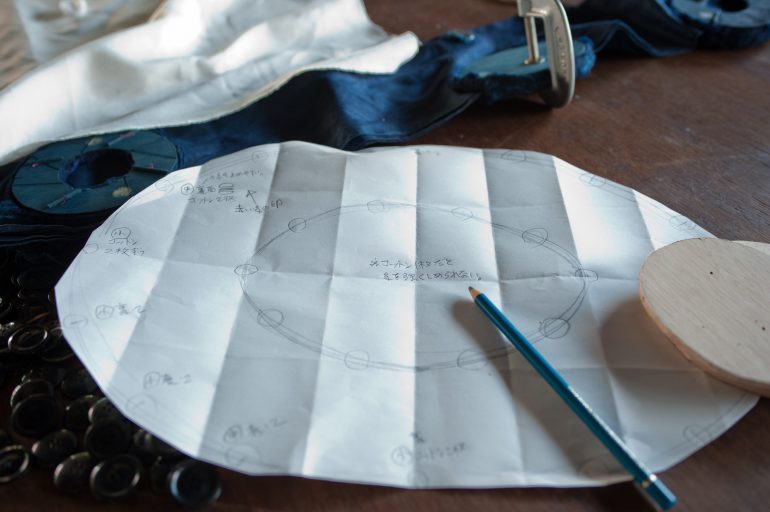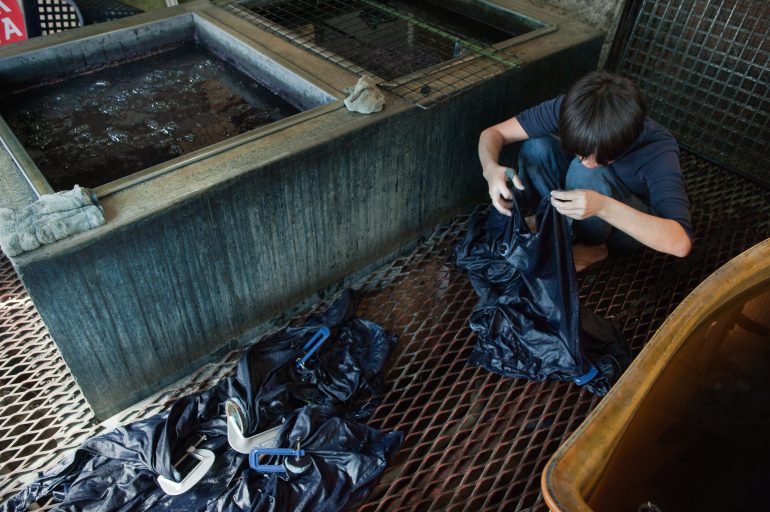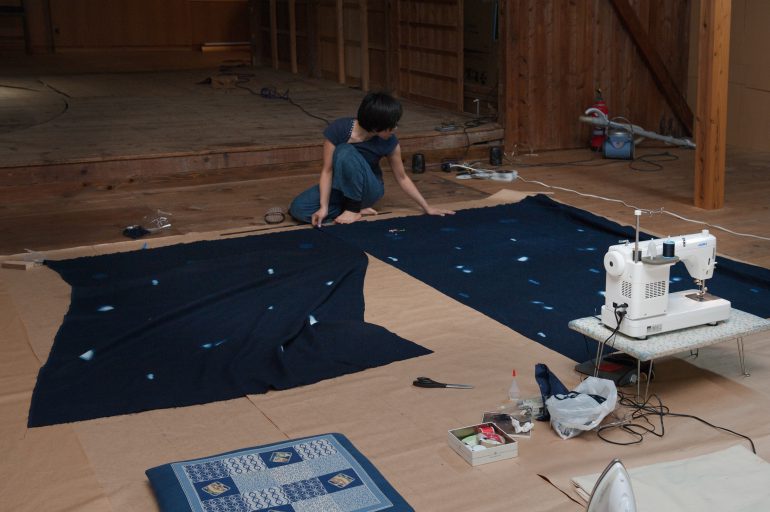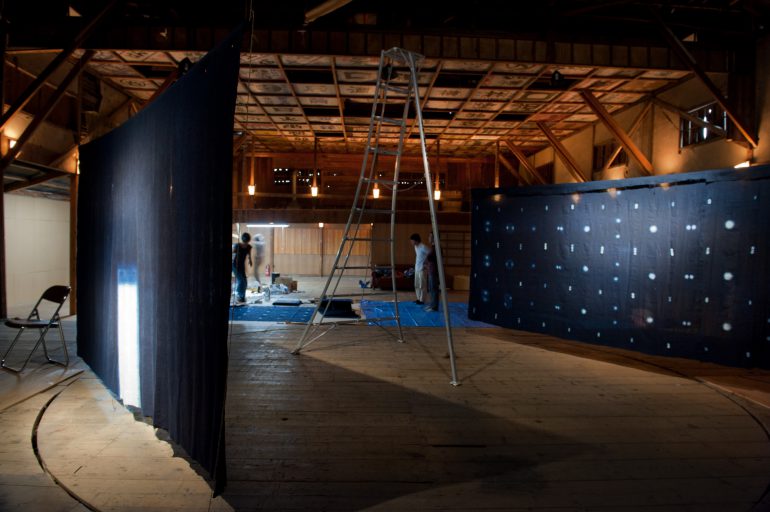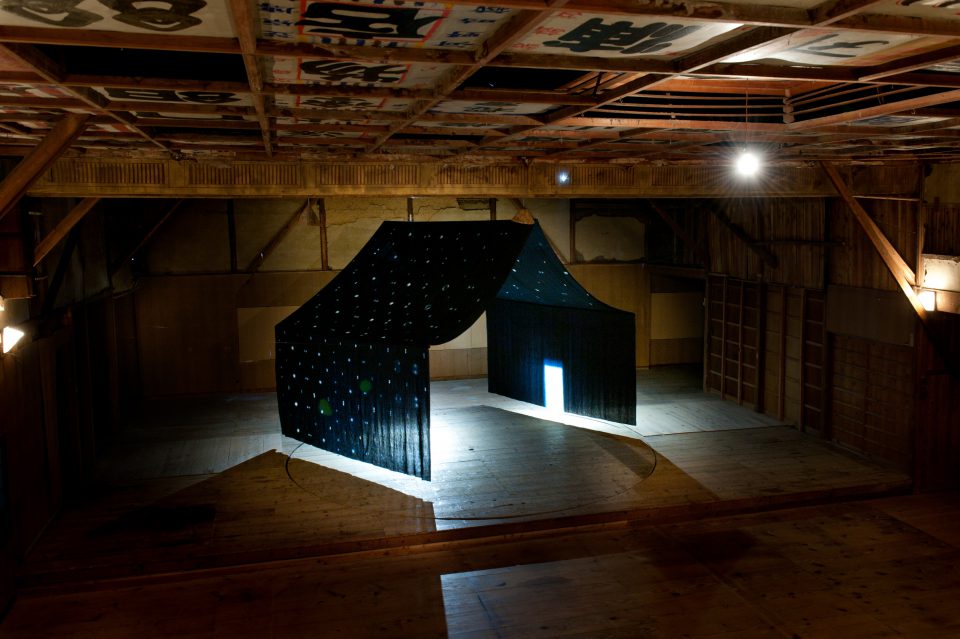
Yui Inoue
2011 Kamiyama Artist in Residence participant
Born in Aichi Prefecture. Graduated from Aichi University of Education with a major in Design Culture. Graduated from Kanazawa College of Art Graduate Program in Textiles. While it started as a hobby, textiles gradually began to encompass everything around her. She works to create installations by using textiles to give a certain sense of “something” to a specific “place” so that the whispers of that place quietly come into relief. “When are made to stop a moment, made to forget the everyday by something that startles us, that makes something inside us shiver a little. I think these moments are when we truly feel the joy of living.” (text in 2011)
(→Yui Inoue Website)
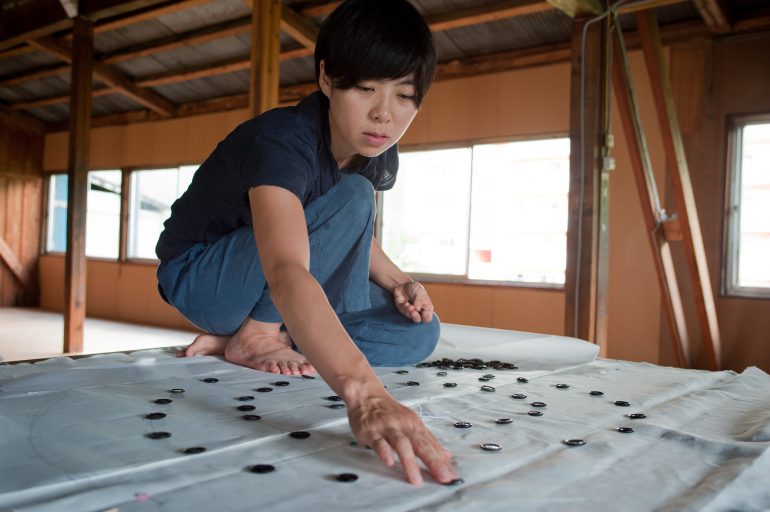
………………………………
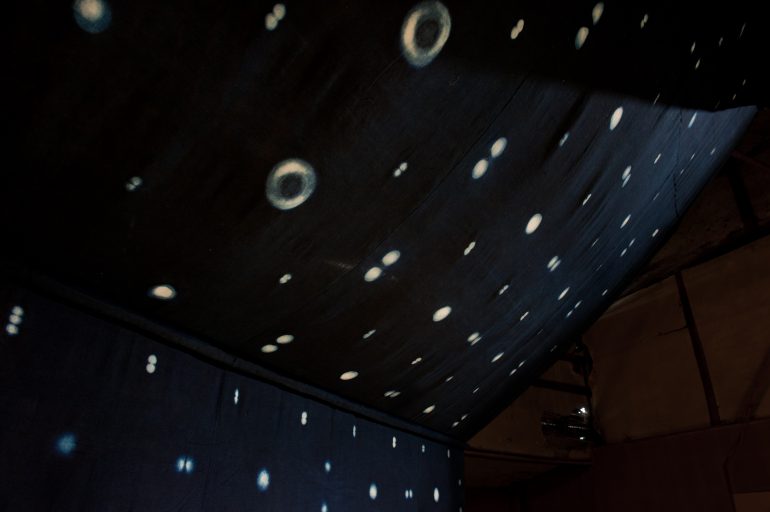
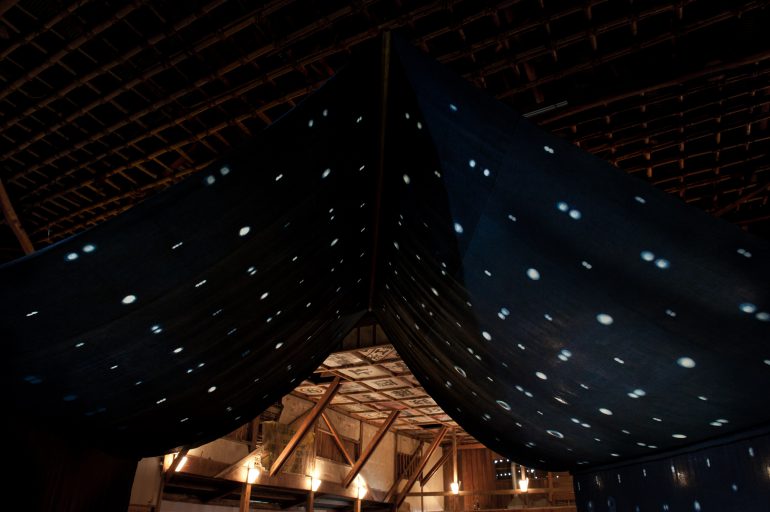
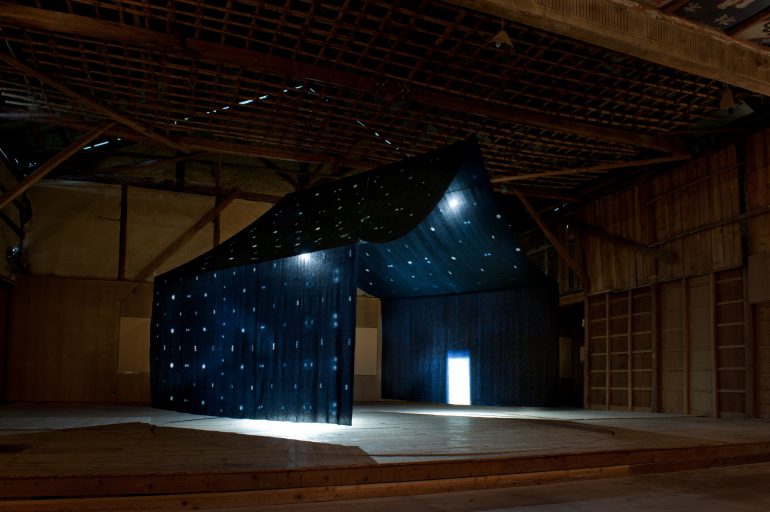
HOME
Yorii-za Theatre
Linen
Indigo Dyeing, Shibori
H300×W300×D350cm
Ever since I was a child, my body has tended to say, “I want to go home”. When I was a child, “Home” was the house where my family was, the place where I was born and raised. When I became an adult and I came to live in one place after another, I began to lose a clear idea of what “home” is to me. But still every so often I would be seized with the same feeling.
I’ve used the shape of a house in my works several times before. Every time it certainly had a different nuance, but I was never sure exactly why I used the shape of a house.
When I began staying in Kamiyama, I had the opportunity to hear Alaskan first nations author Bob Sam tell his story, “Until the wind found its home”. This was a story of “humans that could talk to animals and animals could talk to humans, and everything had a spirit, long, long ago.” Bob’s voice came to me, and transformed into the scene. That scene helped me to recall a physical memory of a connection with all things, and a gratitude for the beauty of nature that I had begun to feel once again in Kamiyama.
I went home, and opened the book. I intended for my eyes to follow the words, but before I knew it, those words came spilling out of my mouth. Over and over I moved by myself through the story. It had been a long time since I’d done such a thing. I became the wind, I became the shells, I became the people. I was able to become many things.
Kamiyama, surrounded by mountains, is in a corner of vast outer space. Rain falls, water flows, light pours in, many different living creatures are here, and the people all nestle close as they live. In one corner of Kamiyama is Yorii-za, which was a place that you can almost hear the bustle and buzz of people living their days with conviction. In a night enveloped in blackness, you can see many stars in the sky far away, quietly blinking. A call like a scream reaches the ear from a deer that seems near, yet far. When I’m here. I lose my understanding of the connection between time and distance.
For me, the things I’ve felt are much more important than the things I’ve thought. I have a hunch that the feelings I’ve gotten directly from my body are more real than the ideas I’ve produced in my head. I think I gather these unsettling, vague, yet fresh impressions that can’t be expressed clearly in words within myself, and they gradually begin to stick together and connect into a single image, which becomes my work.
“Everyone in this world has a home somewhere, it’s important not to forget this. … This world is a home that all living things can share.”
Quote from Japanese version of “How the Wind Finds a Home” by Bob Sam, Translated by Shuntaro Tanikawa, back-translated by Claire Tanaka
……………………………………………………………
